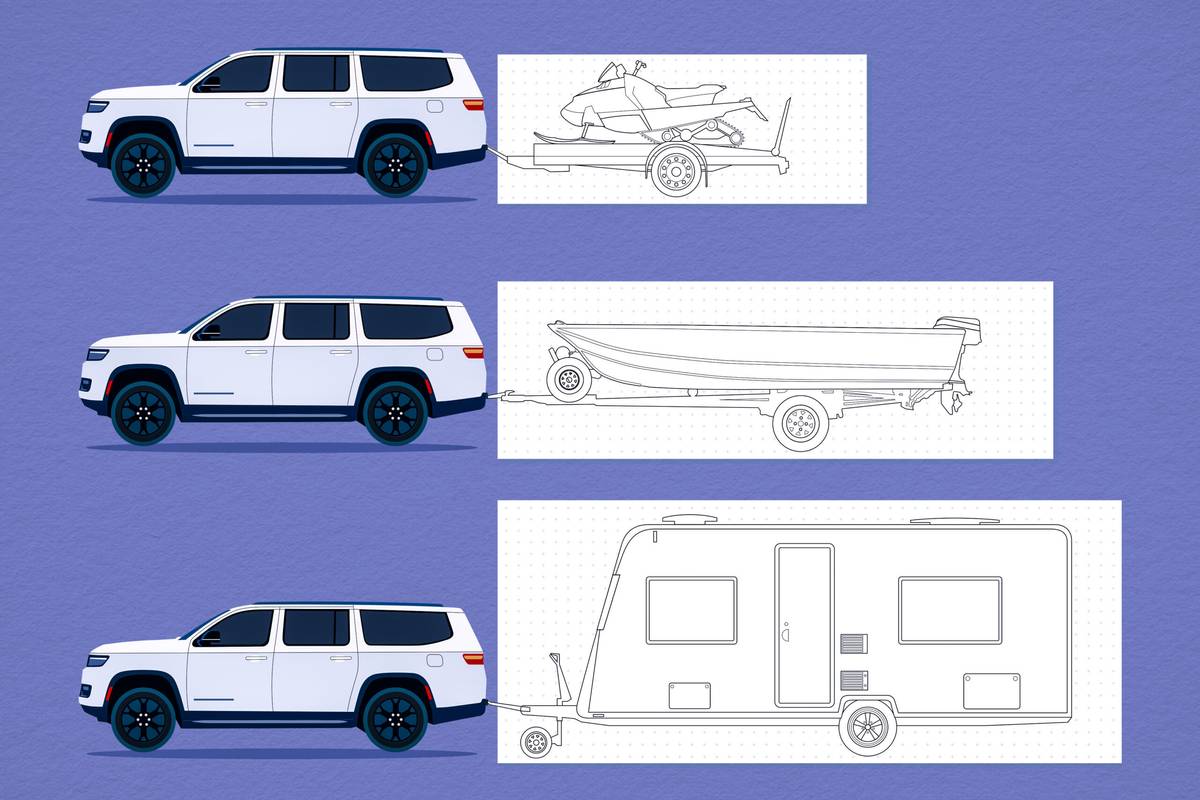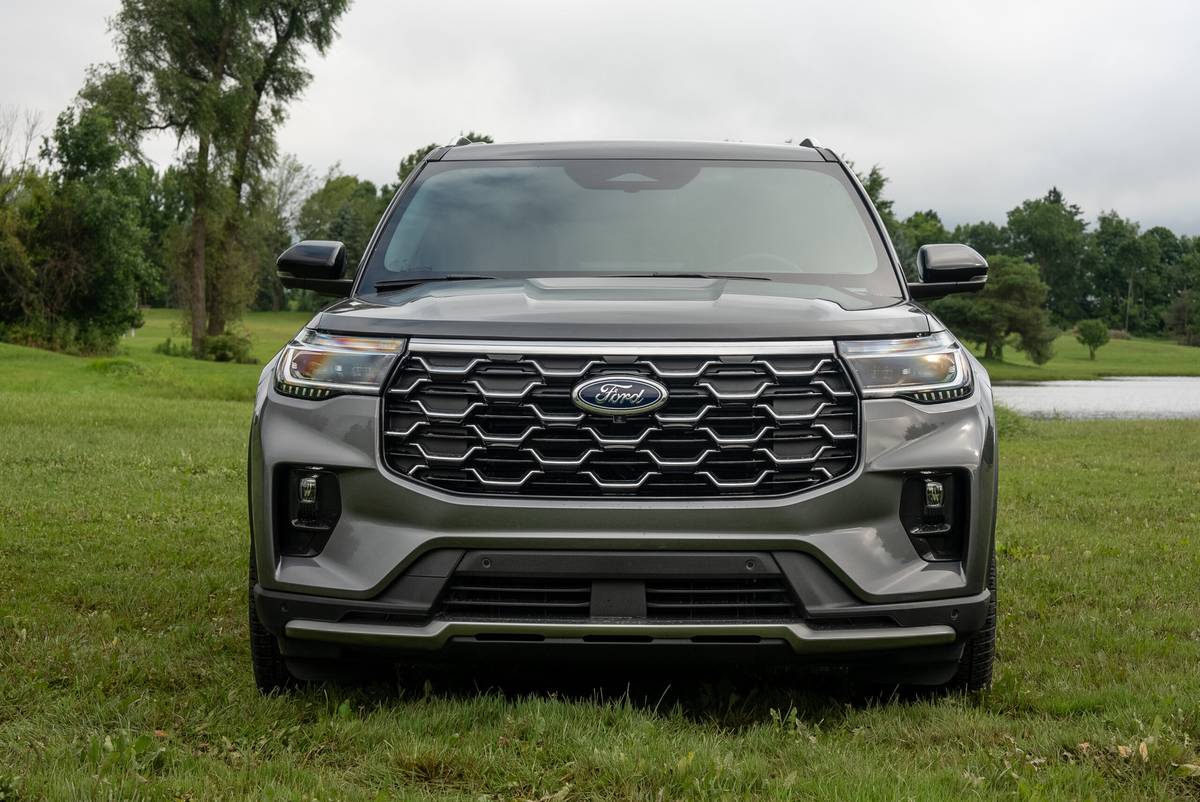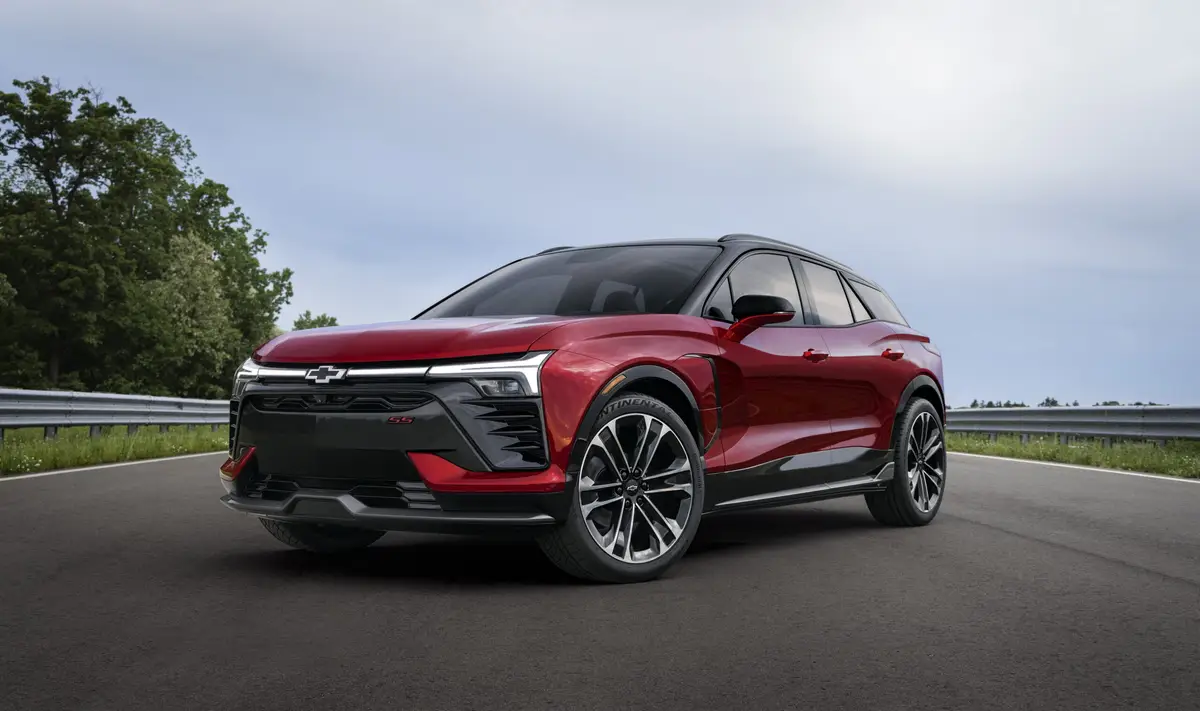Road Test Review: 2010 Ford Harley-Davidson F-150
Words and Photos by John Stewart for PickupTrucks.com
The package consists of 45-series tires on 22-inch forged aluminum wheels, custom pedals, power running boards, a rearview camera with reverse-sensing system and heated and cooled seats with unique interior materials. There are blacked-out headlamps, smoked taillamps and a tuned exhaust with twin chrome tips.
That little laundry list does nothing to explain the strength of character we find in this latest Harley-Davidson F-150 pickup. Actually, it’s a midnight prowler, a lonely back road hustler and a truck with intriguing appeal. It looks right, sounds right and feels right, nicely consistent with the idea of a Harley-Davidson Heritage Softail Classic or any of Willie G’s finest. It’s a modern truck that squares two rich traditions — Ford and Harley. Appropriately, it’s a full-size domestic product with genuine originality, comfort and style.
This 2010 F-150 is the made by Ford since 1999. Eight of those have been F-150s, six are Super Dutys, and one is an F-450. Our test unit is a two-wheel-drive F-150, but this latest iteration of the Harley-Davidson Edition is also available as an all-wheel-drive truck. All have roomy Super Crew cabs with a 145-inch wheelbase and 5.5-foot bed.
We spent a week driving our test unit, mostly around town and on congested Los Angeles roadways during peak traffic hours. Even in these sometimes-frustrating situations, the F-150 is still a nice ride because it’s a torquer that doesn’t have to wind up the engine to move out. From a standing stop, there is a tangible sensation of ready power.
Easing away from a stoplight with just a little bit of throttle, the exhaust rumbles softly, and the truck moves out readily. When the tachometer reaches 2,000 rpm a moment later, you’re doing 45 to 50 mph and all the cars that were around you are now in the rearview mirror. This ease of motion is a combined function of both gearing and V-8 engine power, and we must say, it’s a satisfying way to drive. We found ourselves operating almost exclusively below 2,000 rpm without ever hurrying, yet somehow always out in front of traffic.
On the highway, the Harley-Davidson F-150 is equally pleasant to operate. It’s big, it’s stable, and the ride is about as well controlled as an empty pickup can be. At 60 mph, the tachometer reads 1,600 rpm, and at 2,000 rpm, you’ll be looking at 72 mph in sixth gear with another 4,000 rpm left on the tach. The transmission is an electronic six-speed that has a very low first gear (4.17:1) and a very tall sixth (0.69:1) — thus, the combination of torque off the line and a quiet, easy cruise. The Harley-Davidson Edition comes with 3.73 gears in the rear axle, a ratio that favors pulling power and drivability over high mileage.
The R680E six-speed is clearly tuned for comfort shifts, even to the point of bordering on mushy when responding to sudden throttle inputs. Ask it to pass on the highway and you’ll get a long downshift then soft, smooth upshifts with no thump. There is not a lot of snap, gear-to-gear, but the trans responds well to rolling on the throttle, so we learned to drive it using the engine’s torque rather than forcing a lot of hard downshifts. Either way, before you know it, the speedometer reads 100 mph and it’s time to think about keeping your license. Top speed is 115 mph.
During our testing, we got 13.7 mpg overall, close to the EPA city rating of 14 mpg. At steady cruise on the highway, which we did not see much, the F-150 is EPA-rated to deliver 20 mpg. We did not baby the truck, but with all the traffic we didn’t do a lot of full-throttle driving, either. We did peal out one time, strictly for testing purposes, to make sure the truck can do it. It can.
The 330-cubic inch Triton engine is the biggest engine that Ford currently offers in an F-150, though a 6.2-liter gas V-8 is coming soon. The 5.4-liter SOHC V-8 makes 310 horsepower and 365 pounds-feet of torque at 3,500 rpm, and up to 390 pounds-feet on ethanol. It’s a long-stroke design, biased for torque, so much so that according to Ford, 80 percent of the torque is available at just 1,600 rpm.
The underhood layout is one of the best parts of the new F-150. Everything you would want to touch is within easy reach — fuses, air filter, fluid lids and dipsticks. The engine, in contrast to previous generation Ford trucks, is not entirely located under the front dash and yet, there is still nearly a foot of free space between the front of the engine and cooling system, making it easy to inspect belts and change them. Even the oil filter is easily seen, easily touched, with room to actually turn a wrench.
Judging by the reactions of people who saw us driving the truck, there is something compelling about it because we got genuine compliments from parking lot attendants, people at the filling station and co-workers who don’t even drive trucks. Pretty much everywhere we went, somebody had something to say. That tells us the design is handsome, but mostly, we think this truck stands out because of attention to detail. It’s the level of detail, especially in the interior, that separates the Harley-Davidson Edition from the average F-150.
For example, the dash has a soft leather instrument panel shade with contrasting stitching, which ties in with the black-and-lava leather trimmed captain’s chairs and a generously padded center console. The Ford people tell us the seats were designed to resemble a Harley biker jacket, using the same materials you’d find on Harley-branded apparel. We’d have to say they pulled it off. It’s nice-looking but, more importantly, it feels right for the truck.
And then, when you look harder, you see more. The panels around the dash appear to be black lacquer. The pedals are custom billet pieces with a Harley-Davidson logo. The instrument panel is unique to the truck, and the crazed background for the instrument dials adds another custom layer. The map pockets behind the front seats close with heavy zippers from Harley riding jackets. The dashboard material turns out to be hard plastic, though we couldn’t tell until we touched it. Visually, the material reminds us of a pair of lizard-skin boots. The badges on the interior — on the center console and seatbacks — are said to be handmade cloisonné, and they do look it. Some might say the badging is overdone—there are six Harle6y logos in the interior alone, eight if you count the pedals —but they’re nice, quality pieces so they provide a sense of craftsmanship. On the console, we found a small plate that told us our test unit was the 379th of the 2010 model year. (All Harley F-150s are turned out by UAW Local 600 at Ford’s new River Rouge plant in Dearborn, Mich. Just so you know, we’ve been to the plant, we’ve talked to the workers, and from what we can see, it’s a world class facility staffed by well-trained, highly motivated workers.)
The exterior is also carefully designed to make an impression, one that stands up to scrutiny. The paint is described as Tuxedo Black with Lava accents, with Lava being a kind of deep maroon with three-color metal-flake. Yet, the truck takes on different shades as the light changes. When we photographed the truck at dusk, we could have sworn it was black, glossy as a raven. But in the brightest direct sunlight, Tuxedo Black turned out to be a very deep maroon with black in it. We’d almost say brown, except that the highlights tended toward red. It’s a hard color to describe, but clearly the paint is rich, complex, mysterious and flawlessly applied. We’re disappointed in our shots of the 22-inch wheels, which are nothing short of gorgeous, because they just don’t convey the subtle use of color and machined contrasts. Like the interior, Harley-Davidson logos and monograms are everywhere — we counted nine — but they look good, and there is nothing cheap about the way they are used. Interestingly enough, there are only two Ford blue ovals.
So it’s a truck that makes an impression, no doubt, but beyond that the Harley-Davidson F-150 has to be functional. After all, it’s a truck. We were relieved to find that very little functionality has been traded for style.
For example, we have 22-inch wheels shod with Pirelli Scorpion Zero tires in a P275/45R22 size. These are performance street tires, but they are also E-rated, can carry a maximum load of 2,469 pounds apiece, at 50 pounds per square inch. The axles are rated to carry 3,450 pounds and 3,500 pounds, front and rear, so the tires have plenty of capacity to spare. The rear leaf springs are made using three hefty leafs, plus a fourth overload leaf. The front suspension uses a coil-on-shock arrangement with long-spindle double wishbones. At the rear bumper is a factory receiver hitch and wiring plugs for 6-pin and 4-pin harnesses and inside, an integrated brake controller is located just to the left of the steering column.
That all adds up to a truck that can safely tow 10,500 pounds with a weight-distributing hitch, or 5,000 with a weight-carrying hitch. The 6,850-pound GVWR package, which our test truck had, is a no-charge option. If you’re going to haul or tow, we’d say it’s the way to go because it didn’t seem to compromise the ride too much. Payload is pegged at 1,170 pounds, about average for a half-ton truck. We didn’t tow anything during the time we drove the truck, but we did notice the bed would accommodate a 6-foot Christmas tree with the tailgate up.
Another revealing piece of equipment would be the power running boards that automatically extend when the door is opened. The F-150 is certainly much easier to get into with running boards, but running boards can spoil the look of a truck designed to be clean in appearance. The solution, automatic-retracting running boards, surely was not a cheap feature to add, but a necessary one to remain true to the concept of clean, uncluttered design.
The 2010 Harley-Davidson Edition F-150 starts at $42,690, and our test unit had another $4,200 in options, including a Sony/Navigation package, power moonroof, bed extender, tailgate step and trailer brake controller. Of these options, the $2,430 Sony system stood out as something we could really appreciate, though the others are nice to have. We did find evidence that the thick rubber Harley-Davidson bed mat seems to interfere a bit with the operation of the optional folding tailgate extenders. The extender wings can be made to deploy once you get the hang of it, but if it were up to us, we’d pass on those and save $195. The rubber mat is really nice, and we’d rather keep it simple back there, anyway. The final sticker price was $47,890, plus a destination charge of $975. That’s not cheap, but frankly, we were surprised. We thought it would be more.
Melding together the two brands is a tough assignment. Given the realities of the automotive business, we expected to find a marketing-driven product with a clunky graphics package and slapped-on chrome trim, compromised functionality, plus an inflated sticker price. What we found was evidence of a genuine respect for authenticity, history and an understanding of what makes a brand iconic. We found evidence that the product design team went toe-to-toe with the bean counters and held their own. It adds up to brand sensitivity and product integration that has become rare. We consider it a job well done, and if there is any justice in the world, it will pay off for Ford.

Featured stories



